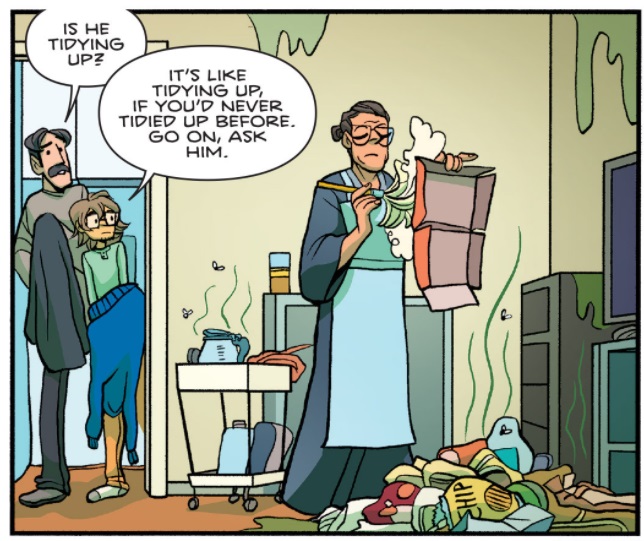VR Devices are currently very limited in their haptic output. They also have basically no ability to affect temperature, air condition, or smell.
As VR designers, this limits us to creating spaces that have no smell, have no sense of air quality, and whose floors or surfaces are barely a factor. Right?
I believe designers should pull themselves away from the draw of “realism” and consider other approaches to create spaces that more effectively evoke mood and tell stories.
Specifically, I recommend a postmodern approach where VR designers draw from the signifiers of other storytelling mediums.
We should communicate what we wish to communicate - like the smell of something - through the tools a medium provides. This includes VR-specicfic elements like the users own proprioception. This article is but a simple reminder that it also includes visual artifacts that have a rich history in other mediums which we can draw on.
Tackling a Lack of Input?
To even consider the statement “One weakness of VR is that it lacks a sense of smell” as coherent requires the supposition that one thinks of VR as a tool used to replace reality with the end-goals of believability, realism, and immersion.
Consider, instead, VR as a storytelling medium. Many have come before it. Many will come after it.
Consider an environment that, in real life, would carry a strong smell: a kitchen, a meat locker, a sewer. A ‘realism’ framework of VR leads us to the following conclusion: The design of such smelly places is a significant challenge, and it requires great care and thought because VR is currently unable to use the smells to signal the player of their environment. Maybe one day the technology will advance enough…
Thinking like this means we are missing a really obvious, and not all that difficult, solution.
TV, Graphic Novels, Illustration, and … basically all other storytelling mediums except for scratch-n-sniff stickers don’t have smell, and they still manage to communicate it. It’s possible to borrow the visual language these mediums have developed. Of course it is! If we just think about VR as a storytelling medium, and not as a reality-replacer, then the “solutions” to our non-problems are blatant, obvious, and clever.

Stink lines, flies, hyperbolic stains, and a green tint to shadows signify smell in this panel from the comic *Giant Days by John Allison, illustrated by Max Sarin.
In media, sewers often contain a highly unrealistic and borderline magical green fog. The fog - thick, floating, and so uncannily-colored - carries the idea that one would be able to feel the smell of this place.
To use this visual language, one must first give up on the notion of realism as an appropriate end-goal of VR experiences. One must first accept that realism is just another tool that one can use towards achieving the goals of an experience.
Realism is a tool that should be applied when it is appropriate - and not applied when it is unhelpful. It is not a limitation. I mean, we’re in VR here… isn’t the whole point that reality isn’t a limitation?
Also consider what an actual apartment kitchen may look like: a cabinet, a counter, a range, a sink. Now think of an image of a kitchen as informed by representations in visual media: pots hanging from the wall, a magnetic bar holding knives visibly silhouetted on the wall, some stains, a patterned drying rag, a surprising amount of counter real-estate full of pans, blenders, mocha-pots, and more. Does nobody put things away? The designer of whatever space you may be imagining has done a lot of extra work on the visual imagery of a kitchen. They have filled it with signifiers that represent “kitchen”. Kitchens contain a lot of unique objects and shapes!
For a realism approach, we could start by investigating reference imagery, 3D scans, and so on. The “real world” may remind us that magnetic knife holders and hanging pots are not as popular a kitchen element as video game levels and cooking TV shows would have us believe. A safe and clean kitchen tends to be tidy-ish in high traffic areas. But there’s no real reason to hold ourself to that reality. Sure, I’ve been in a lot of small apartment kitchens that barely register as kitchens, if not for the sink. But if we want our environments to register instantly, then lets borrow the visual language! Lets fill it with kitchen junk! Lots of visible storage! Fancy drying racks for everyone.